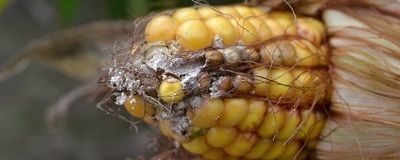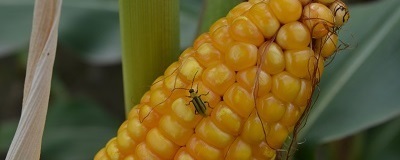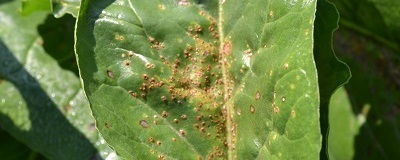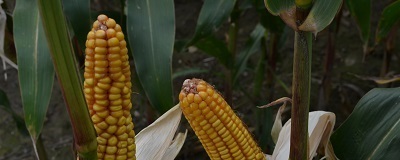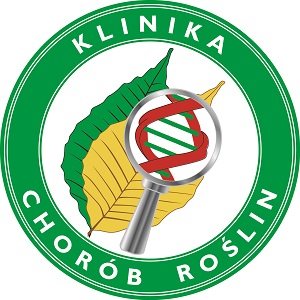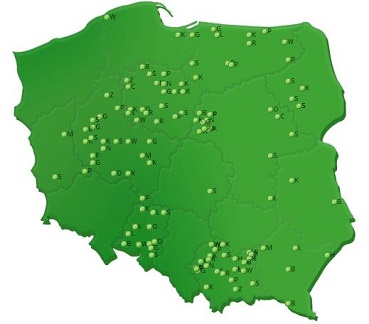Extra menu
Page menu
Social networks icons
Page content
The predominant field of the research conducted by the Plant Disease Clinic (PDC) and Pathogen Bank is phytopathology. The Clinic conducts diagnostic tests of plant pathogens: viruses, bacteria, and fungi. Since its PCA accreditation in 2013, the PDC has been identifying pepino and cucumber mosaic viruses and phytopathogenic bacteria by officially approved methods. For all other requests, the test methods are selected to fit the test purpose in conformity with stringent scientific standards.
PDC’s primary focus is on diagnosing viral cereal diseases, in particular those caused by barley yellow dwarf virus, wheat and the yellow virus of rape, turnip, beet, and other vegetables, mainly tomatoes and cucurbits. In recent years, the PDC has expanded its test range to include diagnoses of bacterial and fungal crop diseases, which the producers of ornamental plants, shrubs and herbs are increasingly reporting.
As new viral, bacterial, and fungal isolates are acquired, they are added to the IPP-NRI Collection of Plant Pathogen Microorganisms. The isolates are used for further research aimed mainly at either developing new or improving existing techniques of pathogen detection, identification, and description. Our team’s research findings have enabled us to join numerous research projects. The Pathogen Bank does research to identify effective methods for the laboratory storage and preservation of microorganisms. The collection’s holdings reflect the trends in plant pathogens as observed in Poland over the years. Since the collection was first established in 1996, our observations have led to reporting numerous pathogens.
The Plant Disease Clinic is the only body of its kind in Poland to provide viral, bacterial, and fungal plant disease identification services and counseling on plant pathogen diagnostics, disinfectant efficacy on viral, bacterial, and fungal plant pathogens, and related equipment and work surfaces. We are accredited by the Polish Center for Accreditation for compliance with the PN-EN ISO/IECISO 17025: 2005 standard.
We collaborate with research institutes, phytosanitary services, and advisers (the State Plant Health and Seed Inspectorate, Regional Plant Health and Seed Inspectorates and Agricultural Advisory Centers), breeders, vegetable, agricultural, seed, and ornamental plant producers, plant protection product distributors, farmers, and gardeners.
Publications related to Plant Disease Clinic activities
PUBLICATIONS
- Zarzyńska-Nowak A., Rymelska N., Borodynko N., Hasiów-Jaroszewska B. 2016. The occurrence of tomato yellow ring virus on tomato in Poland. Plant Disease 100(1): 234. (IF 3,173; MEiN 35; MEiN 70)
The tomato yellow ring virus (TYRV) was first detected in 2014 on a greenhouse tomato farm in the Kuyavian-Pomeranian Region of Poland. The virus belongs to the Tospovirus genus. Necrosis was observed on the infested plants, while round, yellow-and-red spots appeared on fruit. TYRV commonly co-occurs with the tomato spotted wilt virus, which may exacerbate symptoms. TYRV also infects potatoes, soybeans, and ornamental plants.
- Minicka J., Zarzyńska-Nowak A., Budzyńska D., Borodynko-Filas N., Hasiów-Jaroszewska B. 2020. High-Throughput Sequencing Facilitates Discovery of New Plant Viruses in Poland. Plants 9: 820. (IF 2,762; MEiN 70; MEiN 70)
Next-generation sequencing has made possible the detection of new virus species never before reported in Poland, which include clover yellow mosaic virus (ClYMV) on medicinal verbena (Verbena officinalis L.) and melandrium yellow mottle virus on the white campion (Melandrium album). Weeds and other wild plants may act as reservoirs of these viruses and a source of further crop infections.
- Zwolińska A, Borodynko-Filas N, Nowaczyk D, Hasiów-Jaroszewska B. 2018. First Report of Prunus domestica L. as the Host of a Phytoplasma Belonging to Group 16SrI, Subgroup B/L. Plant Disease 103(1): 145. (IF 3,583; MEiN 35; MEiN 70).
In 2016-2017, 'Candidatus Phytoplasma asteris' 16SrI-L was detected on plum trees (Prunus domestica L.) in an orchard in the Polish region of Greater Poland. Internode shortening and leaf narrowing and diminishing, known popularly as "witch's brooms", was observed on trees. Diseased trees may serve as the pathogen’s reservoir and contribute to further outbreaks.
- Zarzyńska-Nowak A., Hasiów-Jaroszewska B., Budzyńska D., Borodynko-Filas N. 2019. First Report of Cucurbit Aphid-Borne Yellows Virus Infecting Zucchini Plants (Cucurbita pepo convar. giromontiina) in Poland. Plant Disease 103(5): 1047. (IF 3,583, MEiN 70; MEiN 70)
In 2018, cucurbit aphid-borne yellows virus (CaBYV), which belongs to Polerovirus genus, was first detected on a zucchini farm in the Greater Poland and Kuyavian-Pomeranian regions of Poland. The plants displayed such symptoms as mosaics, chloroses, growth inhibition, and fruit shape and coloration abnormalities. CaBYV co-occurred in single and multiple infections alongside other common zucchini viruses such as cucumber mosaic virus, zucchini yellow mosaic virus, and watermelon mosaic virus. CaBYV is transmitted over long distances by Aphis gossypii and Myzus persicae aphids and may pose a serious threat to cucurbit crops.
- Borodynko-Filas N., Minicka J., Hasiów-Jaroszewska B. 2017. The Occurrence of Cucumber green mottle mosaic virus Infecting Greenhouse Cucumber in Poland. Plant Disease 101(7): 1336. (IF 2,941; MEiN 35, MEiN 70).
Cucumber green mottle mosaic virus (CGMMV), which belongs to the Tobamovirus genus, was detected in 2016 on a greenhouse cucumber farm in the Polish region of Greater Poland. Light or dark green discolorations (varying intensity mosaics) were observed on the leaves. Leaf blades were deformed, and the growth of diseased plants was inhibited. The virus causes damage to buds, ultimately resulting in damaged fruits. CGMMV is easily transmitted mechanically and on seeds, which may be the first source of the virus in crops. The virus poses a serious threat to cucurbit crops around the world.
- Budziszewska, P. Wieczorek, K. Nowaczyk, N. Borodynko, H. Pospieszny, and A. Obrępalska-Stęplowska. First Report of Potato mop-top virus on Potato in Poland. Plant Disease 2010 94:7, 920-920
In 2008, the potato mop-top virus was first identified in potatoes grown in Poland. The virus poses a severe threat to potatoes across America, Asia, and Northern Europe. The virus causes distinctive brown arches both inside and outside the tubers. The plants exhibit shortened internodes, whole-plant and stem stunting, and leaf mosaics and necrosis. The virus is transmitted by Spongospora subterranea, the causative agent of the powdery scab.
- Krawczyk, K., Borodynko-Filas, N. Kosakonia cowaniias the New Bacterial Pathogen Affecting Soybean (Glycine max). Eur J Plant Pathol 157, 173–183 (2020).
2016-2017 studies of bacterial presence in soybean showed the emergence of a new soybean bacterium, Kosakonia cowanii in addition to such common species as Pseudomonas syringaepv. glycinae and Xanthomonas axonopodis pv. glycines. Small yellow-haloed necroses, especially on leaf blade edges, were observed. With time, the spots merged into larger lesions. Experimental plot observations showed that all soybean cultivars were infected.
- Zwolińska, N. Borodynko, K. Krawczyk, and H. Pospieszny. First Report of Aster Yellows Related Phytoplasma Affecting Sugar Beets in Poland Plant Disease 2016 100:10, 2158-2158
In 2013, plants bolted in the first year of cultivation were observed on a sugar beet field in western Poland. The stems were distorted and flat, while shoots of inflorescence were clustered and fused together forming ribbon-like structures. The same symptoms occurred in 2014 in sugar beet production seed fields. The disease incidence ranged from 5 to 20%, depending on variety. The presence of Aster jaundice mycoplasma was found in both symptomatic and asymptomatic plants in the area.
- Borodynko N., Hasiów B., Pospieszny H. 2006. First report of Beet soil–borne virus in Poland. Plant Disease 90: 112.
In 2005, the beet soil-borne virus was first identified in Poland. The beets came from a field where beet necrotic vein yellowing virus (BNYVV), the causal agent of rhizomania disease, had previously been found. The infested plants manifested root malformations, and abnormal side root growth forming a chin-like structure. The symptoms were much milder in plants infected exclusively by BSBV.
- Pospieszny H., Borodynko N., Obrepalska-Steplowska A., Hasiów B. 2007. The First report of Tomato torrado virus in Poland. Plant Disease 91: 1364.
The tomato necrosis virus, which belongs to the Torradovirus genus, was detected in greenhouse tomato plants harvested in 2003-2004 in the Polish region of Greater Poland. The growth of the infested plants was stunted, their leaflets and leaves malformed, often showing signs of necrosis. The vector of the virus is the Bemisia tabaci and Trialeurodes vaporariorum whitefly. The virus is also transmitted on tomato seeds.
- Borodynko N., Hasiów-Jaroszewska B., Rymelska N., Pospieszny H. 2009. Watermelon mosaic virus reported for the first time in Poland. Plant Pathology 19(58): 783. (IF 2,368; MEiN 32; MEiN 140)
Several years of monitoring zucchini fields resulted in multiple viruses being detected in Poland for the first time. One of them was the watermelon mosaic virus detected in over a dozen samples taken in fields. Strong mosaics and leaf plate malformations were observed on the plants. The diseased fruits display mosaics and necrotic rings causing their malformation. Heavily infested yellow zucchini fruits may lose even 100% of their commercial value. The virus is transmitted through aphids and mechanically.
- Hasiów-Jaroszewska B., Borodynko N., Rymelska N., Pospieszny H. 2010. First report of Papaya ringspot virus infecting zucchini plants in Poland. Plant Disease 94(5): 633. (IF 2,387; MEiN 27; MEiN70)
In 2010, another virus, the papaya ringspot virus, was detected during the surveillance of zucchini fields. Similarly to the WMV, the papaya ringspot virus is transmitted by aphids and mechanically with plant sap. The virus is widely distributed worldwide, with the P biotype infecting papaya, while the W attacks other cucurbits. The virus was also found in samples with other viruses: watermelon mosaic, yellow zucchini mosaic and cucumber mosaic. The co-occurrence of viruses may exacerbate symptoms on infected plants.
- Borodynko N. 2006. First Report of Beet virus Q on Sugar Beet in Poland. Plant Disease 90:10, 1363-1363
The beet virus Q was first identified in Poland in 2005. The infected beets came from a field in which the necrotic yellowing virus of the beet, causing the rhizomania disease, was previously identified. The primary symptoms observed in the infested plants were root malformations and abnormal growth forming a chin-like structure on the side of roots. Tests showed that BVQ always co-occurs with either BSBV or BNYVV. All the three viruses are commonly found together.
Plant Disease Clinic website: https://kchr.pl/
Project implemented as part of tasks 1.5
Multiannual Program of the IPP-NRI for 2016-2020
Plant Protection Institute – National Research Institute
Ulica: Władysława Węgorka 20
60-318 Poznań
tel. +48 61 864 90 75
fax +48 61 864 91 20

